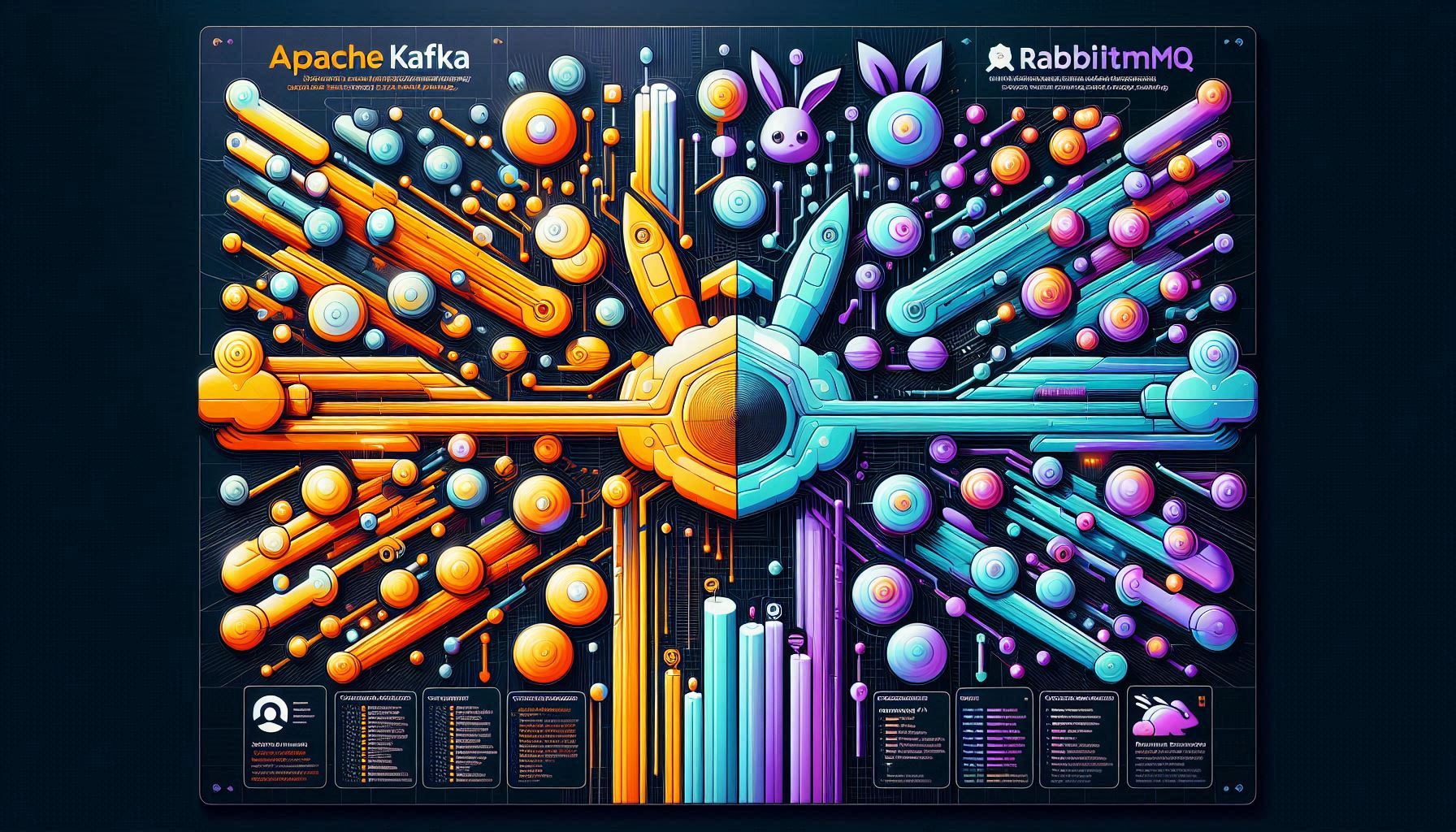RabbitMQ and Apache Kafka are two of the most popular messaging platforms, used to manage communication between distributed systems. While they serve similar purposes, their architectures, capabilities, and ideal use cases are distinct. In this article, we’ll compare RabbitMQ vs Apache Kafka and uncderstand their features, performance, and best use cases. By the end, you’ll have a clear understanding of which platform is right for your needs.
TL;DR
- RabbitMQ: A message broker designed for traditional message queuing, offering reliability and flexibility.
- Apache Kafka: A distributed event-streaming platform optimized for high-throughput and fault-tolerant event processing.
| Feature | RabbitMQ | Apache Kafka |
|---|---|---|
| Type | Message broker | Distributed event log |
| Delivery Model | Push-based | Pull-based |
| Best For | Transactional workloads | High-throughput event streams |
What is RabbitMQ?
RabbitMQ is a traditional message broker based on the Advanced Message Queuing Protocol (AMQP). It enables reliable communication between producers and consumers, supporting features like message acknowledgment, routing, and flexible delivery guarantees.
Key Features of RabbitMQ:
- Message Queues: Supports message queues with multiple routing mechanisms.
- Delivery Guarantees: Offers options for at-least-once, at-most-once, and exactly-once delivery.
- Protocol Support: AMQP, MQTT, STOMP, and more (RabbitMQ Protocols).
- Use Cases: Ideal for transactional systems like e-commerce orders or notification services.
What is Apache Kafka?
Apache Kafka is a distributed event-streaming platform that logs data streams into partitions for fault tolerance and high throughput. It is designed for scenarios where the same data needs to be consumed by multiple consumers over time.
Key Features of Kafka:
- Distributed Log: Stores messages in a distributed commit log (Kafka Documentation).
- High Throughput: Optimized for processing millions of messages per second.
- Retention Policies: Messages can persist for hours or days, allowing replay.
- Use Cases: Real-time analytics, event sourcing, and data integration pipelines.
RabbitMQ vs Apache Kafka: Key Differences
1. Architecture
- RabbitMQ: A message queue that pushes messages to consumers. It relies on exchanges and queues for routing messages.
- Kafka: A distributed log system that allows consumers to pull messages at their own pace. Messages are stored in topics divided into partitions.
2. Delivery Mechanism
- RabbitMQ: Push-based delivery sends messages to consumers as soon as they are available.
- Kafka: Pull-based delivery lets consumers fetch messages when they are ready.
3. Persistence and Retention
- RabbitMQ: Messages are removed from the queue once acknowledged by the consumer.
- Kafka: Messages remain in the log for a configured period, even after being consumed, enabling message replay.
4. Performance
- RabbitMQ: Lower throughput compared to Kafka but offers more control over message delivery.
- Kafka: Optimized for high throughput and low latency in large-scale systems.
5. Scalability
- RabbitMQ: Horizontal scaling requires clustering and additional configuration (RabbitMQ Clustering).
- Kafka: Built for horizontal scalability with partitioned topics and distributed brokers (Kafka Partitions).
6. Use Cases
- RabbitMQ: Suitable for real-time transactional workloads, like task queues or short-lived messages.
- Kafka: Ideal for event streaming and data pipelines, where high throughput and durability are critical.
When to Use RabbitMQ
RabbitMQ is a great fit for:
- Task Queues: Processing tasks in a sequential order, such as image processing.
- Transactional Workflows: Ensuring delivery of important messages like payment notifications.
- Protocol Flexibility: Applications needing support for multiple messaging protocols (AMQP, MQTT).
When to Use Apache Kafka
Apache Kafka is best for:
- Event Sourcing: Storing and replaying ordered streams of events for distributed systems.
- Real-Time Data Pipelines: Moving large volumes of data between systems with low latency.
- Analytics and Monitoring: Streaming logs or metrics for real-time analytics.
Example Scenarios
1. E-Commerce Order Processing
- RabbitMQ: Ideal for managing the workflow of order placement, payment, and shipment notifications.
- Kafka: Overkill for this use case unless analytics or monitoring pipelines are also required.
2. Log Aggregation
- RabbitMQ: Limited ability to replay log data or handle high throughput.
- Kafka: Perfect for aggregating logs from multiple sources and processing them in real time.
3. Microservices Communication
- RabbitMQ: Useful for RPC-style communication between services.
- Kafka: Suitable for broadcasting events to multiple microservices.
Reference Links
- RabbitMQ Official Site
- Apache Kafka Official Site
- Confluent RabbitMQ vs Kafka Comparison
- RabbitMQ Clustering
- Kafka Partitions
- RabbitMQ Protocols




